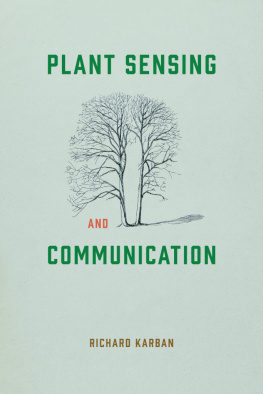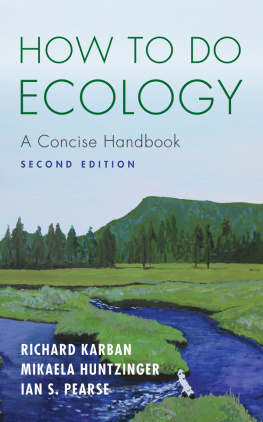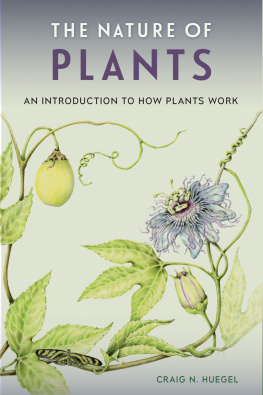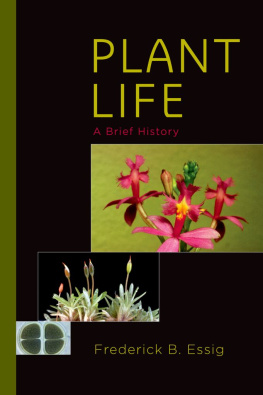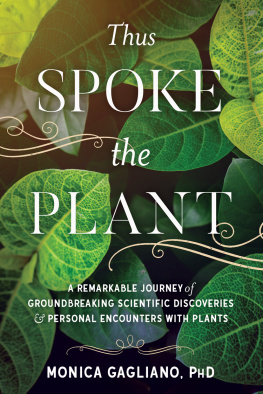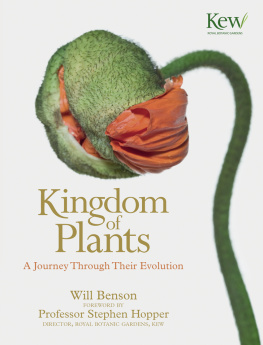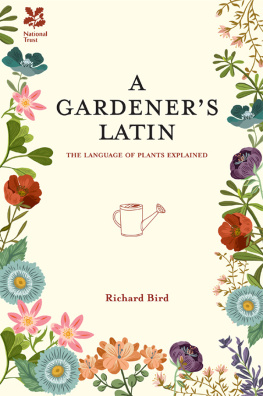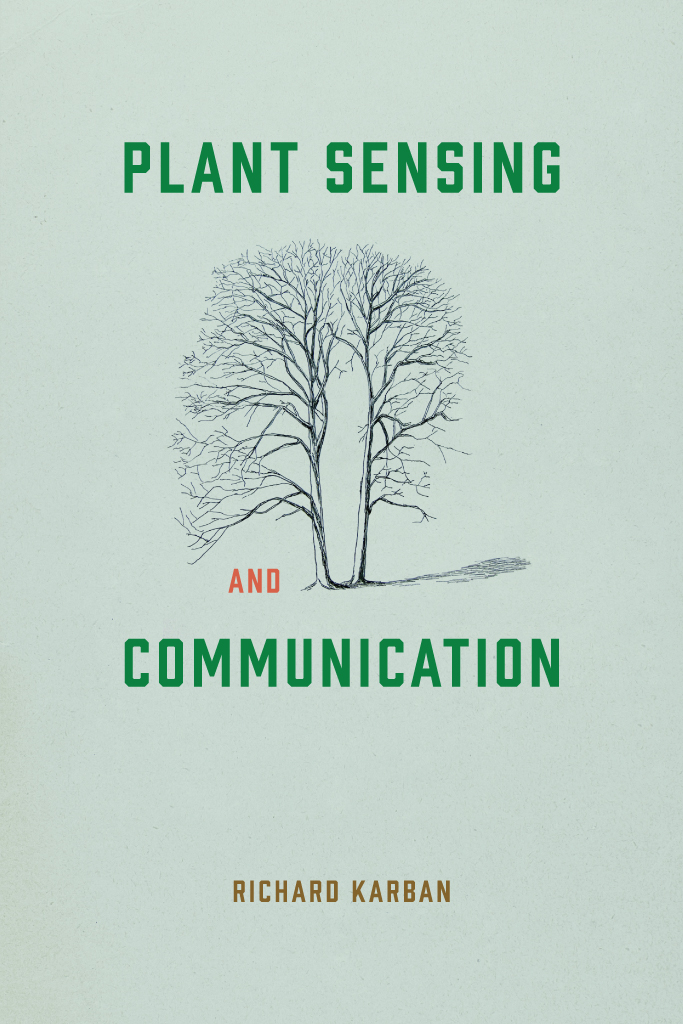I wrote this book to help me place my own work on plant sensing and communication into perspective and to have a project that would engage me once my kids left the house. I thank my chair, Mike Parrella, for giving me the time to work on this, and my wife, Mikaela Huntzinger, for encouraging me and for many discussions about plant behaviors and a million other things. Other people also influenced my views on this subject, most notably my colleagues in animal behavior at UC Davis, Gail Patricelli, Andy Sih, Judy Stamps, and Louie Yang. This manuscript was improved by Anurag Agrawal, Mikaela Huntzinger, Graeme Ruxton, and John Thompson. Christie Henry made the publication process seem effortless.
Plant Behavior and Communication
We all learn intuitively that plants are not like us in many ways. Ask a child about the differences between plants and animals and the answer wont be about photosynthesis. Theyll say, Plants cant move or Plants dont do anything. It is true that plants dont appear to do the things that many of us find most interesting about humans and other animalsmoving, communicating with one another, and displaying a great diversity of sophisticated behaviors that depend upon the particular situations in which they find themselves. But this intuition about plants is incorrect; plants sense many aspects of their abiotic and biotic environments and respond with a variety of plastic morphologies and behaviors that are often adaptive. In addition, plants communicate, signaling to remote organs within an individual, eavesdropping on neighboring individuals, and exchanging information with other organisms ranging from other plants to microbes to animals.
Plants lack central nervous systems; the mechanisms coordinating plant sensing, behavior, and communication are quite different from the systems that accomplish similar tasks in animals. The challenges that face plants are similar to those facing animalsfinding resources, avoiding predators, pathogens, and abiotic stresses, acquiring mates, placing offspring in situations where they are likely to be successful. The modes of selection are also basically similar for plants and animals. As a result, natural selection has led to the evolution of solutions to these challenges that are often analogous. Nonetheless, there are many important differences between plants and animals that have led to very different adaptations, including the behaviors that will be considered in this book.
Although the issues that plants and animals face have similarities, their habits, abilities, and circumstances tend to be different in many ways. Most plants are capable of producing their own food, allowing them to spend much of their lives as factories converting resources (light, water, CO2) into organic tissues. Since these resources are rapidly renewable, vegetative organs of many plants move relatively short distances and remain rooted in the soil. Higher plants are constructed of repeated modular units (leaves, branches, roots) that are far less specialized than the organs of higher animals (White 1984). Many important processes are carried out by plant organs that are less centralized than their counterparts in higher animals. For example, plants lack a central nervous system, and consequently, phenotypic expression is determined locally in many cases. Plants acquire resources from many different organs, above ground and below, thus avoiding restrictions that would be imposed by one or a small number of mouths. Diverse plant structures arise from undifferentiated meristems that have the potential to produce any cell type, including germ cells and somatic cells. In addition, these diverse plant organs can be produced repeatedly during the lifespan of an individual. Important plant organs are generally found in multiple, redundant copies, making any single organ more expendable than similar organs in most animals. This open-ended growth form allows plants enormous developmental flexibility, an important attribute that was recognized by the Greek botanist Theophrastus approximately 300 years BC (White 1984, Herrera 2009). Developmental flexibility allows plants to respond to environmental cues and change morphology, adding or shedding organs in response to current or anticipated conditions and allowing plants to forage for light, water, and soil nutrients and to allocate resources to reproduction, growth, or storage.
The philosopher Michael Marder (2012, 2013) has recently introduced the idea that plants sense their environments by focusing attention towards some cues more than others. The attention is dynamic, allowing plants to selectively respond to shifting, current stimuli. Many studies of plant responses to resource heterogeneity attest to the ability of plants to sense many stimuli (dition, different cues vie for the attention of sense organs or receptors that are distributed throughout the plants tissues. Plant sensing is not contemplative, but active, and translates into various behaviors (see section 1.2.1). Unlike memory, which is also displayed by plants but is biased towards past events, plant attention as described by Marder is focused on current stimuli.
As humans, we have a tendency to compare plants to humans and other higher animals. Such comparisons can be useful at times, since our awareness and understanding of human behavior and communication is so much better developed. However, such comparisons can range from counterproductive to absurd, if done uncritically. For example, several authors assert that plants can appreciate and benefit from hearing particular kinds of music, most famously in the popular book, The Secret Lives of Plants (Tompkins and Bird 1973). The hypothesis that plants may respond to music is not itself absurd, since plants can sense and respond to electromagnetic radiation and acoustic energy (Telewski 2006, Gagliano et al. 2012b). However, asserting that plants benefit from music without carefully controlled experiments is not science and has hurt progress in this field and acceptance of these ideas. In summary, while plants dont appear at first glance to behave, in some cases they have evolved functions that are analogous to those in animals, but with different mechanisms and capabilities.

